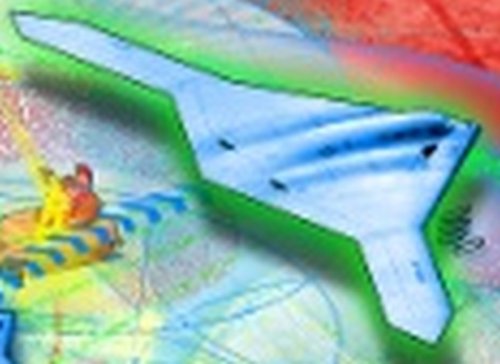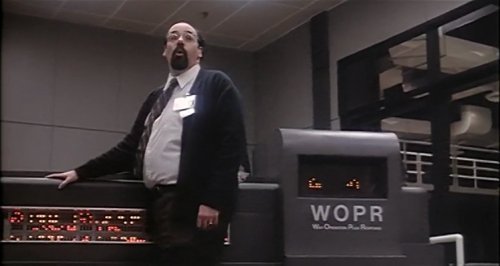You are using an out of date browser. It may not display this or other websites correctly.
You should upgrade or use an alternative browser.
You should upgrade or use an alternative browser.
US Next Generation Bomber Studies
- Thread starter flateric
- Start date
Steve Pace
Aviation History Writer
- Joined
- 6 January 2013
- Messages
- 2,266
- Reaction score
- 168
She's a he.  -SP
-SP
- Joined
- 2 August 2006
- Messages
- 3,175
- Reaction score
- 1,160
I disagree with his reasoning on why Boeing will win the contract. I mean, what he is saying is true if you don't take into account classified programs. But the reason Boeing is going to win is;
a) St. Louis needs the work.
b) Northrop has the RQ-180.
That's why Boeing is going to win.
a) St. Louis needs the work.
b) Northrop has the RQ-180.
That's why Boeing is going to win.
- Joined
- 4 May 2008
- Messages
- 2,440
- Reaction score
- 676
sigh...at least this time around he disclosed who he's working for. But yeah, conveniently the fact that the Lockheed team gets the award is saved for last, and becomes the de facto takeaway of the article.
Orphic
ACCESS: Restricted
- Joined
- 11 May 2010
- Messages
- 13
- Reaction score
- 2
flateric said:Oh, what outstanding discoveries did she make!
Crossdressing tends to confuse the issue most times
- Joined
- 3 June 2011
- Messages
- 17,339
- Reaction score
- 9,079
I'll still be surprised if Boeing/LM wins over NG (unless their design is truly superior-but I'm not holding my breath on that front). Why would Northrop Grumman be spending a single dime at this point if it were already decided?
Mat Parry
ACCESS: Secret
- Joined
- 25 January 2011
- Messages
- 417
- Reaction score
- 24
marauder2048 said:FWIW, Loren Thompson has weighed in on some of the issues of interest (range > 5000 n.mi, payload < B-2, no supersonic cruise/dash etc.) on LRS-B and calls the competition for Boeing.
http://www.forbes.com/sites/lorenthompson/2015/03/09/the-air-forces-b-3-bomber-isnt-as-secret-as-it-seems/
"There have been repeated reports of the B-2′s susceptibility to detection by long-wavelength search radars due to the peculiar correspondence between its dimensions and the radar waveform"
I have missed the detail of these repeated reports... If they had indeed occurred & were actually true, my first guess would focus on the size & shape of sawtooth trailing edge?
[the original B-2 design & the more recent Lockheed NGB model (the one with the weird / damaged? Intakes) look like a B-2 without the sawtooth].
It would be ironic if the change in shape (to strengthen the structure for low level flight) had driven a vulnerability to long wave radars resulting in the B-2 having to penetrate via low level....
bring_it_on
I really should change my personal text
- Joined
- 4 July 2013
- Messages
- 3,123
- Reaction score
- 2,239
Does anyone expect a major scoop on the LRS-B program to come from Forbes?
- Joined
- 1 April 2006
- Messages
- 10,730
- Reaction score
- 6,768
Would be interesting to compare to real world RFP at certain point in the future...
VII. REQUEST FOR PROPOSAL
Next Generation Strategic Bomber
Student Design Competition RFP Abstract
Hernando Jimenez, Aircraft Design Technical Committee
Background
The United States long-range strike capability is facing an important paradigm shift, in part because foreign military forces are aggressively investing in advanced air-defense and area denial systems. This new context challenges the previously established power-projection paradigm where capabilities could be deployed from forward positions in near-theater ally territories to deliver tactical strikes, carrier-based capabilities, air refueling, and airborne C4ISR. In addition, potentially hostile military assets have become more dispersed, increasingly mobile, and more effectively concealed.
Current long-range strike capabilities have been deemed to be insufficient under this new paradigm. Carrier-based strike platforms needed for engagement in regions with advanced air defense systems lack range and persistence, particularly when pursuing abundant targets (100’s or 1,000’s) that are mobile or that are deeply buried and concealed. Legacy land-based bombers like the B-52 and the B-1B cannot penetrate and persist in highly defended theaters. Airborne electronic attack, C4ISR, and logistic support capabilities lack range and are particularly susceptible in these high-threat areas. While the B-2A does provide competitive capabilities in highly defended areas, the current fleet is limited to a mere 20 units, in part due to its exorbitant cost of $1.2 B per platform.
A new affordable penetrating bomber is desired to bridge strategic long-range strike capability gaps with an anticipated entry into service date of 2020-2025. This bomber is expected to be part of a long-range strike family of systems that will also include extended range unmanned carrier-based strike platforms, new long-range air- and sea-launched cruise missiles, and non- nuclear global strike missiles.
Design Requirements
Entry into Service and Lifetime: The bomber shall have an entry into service date in the 2020-2025 timeframe. It shall be designed to have a service life no less than 30 years.
Mission and Payload: The bomber shall be an optionally manned aircraft, with two crew members whenever operating in its manned configuration.
The bomber shall carry a payload of no less than 20,000 lbs of conventional ordnances, and shall be capable of carrying and deploying air-to-air missiles. A “soft” upper limit of 50,000 lbs approx. is suggested but not enforced. Proponents must identify and substantiate payload capabilities within this range. The bomber must also be nuclear capable, requiring at most minor modifications.
Unrefueled combat range shall be no less than 4,000 nm. Additional unrefueled range beyond this minimum requirement is highly desirable, with strong preference for greater range capability extending up to or beyond 5,000 nm. Proponents must identify and substantiate range capability pursuant of these requirements and preferences. The bomber shall also allow aerial refueling, and must demonstrate intercontinental strike capabilities with aerial refueling. Takeoff and landing performance must guarantee deployment from all relevant U.S. bases.
Mission parameters such as cruise altitude and speed are not specified as part of this RFP and must be determined by design proponents. Determination of open mission characteristics must ensure compliance with all relevant military standards and specifications.
Survivability and Persistence in Defended Areas: The bomber must be capable of persisting in high-threat areas characterized by advanced and very dense air defense networks. All-aspect broadband stealth features as well as a variety of self-protection features are expected.
Autonomy and Unmanned Capabilities: For unmanned operational capabilities, the bomber shall be compatible and fully integrated with current and anticipated C4ISR infrastructure enabling remote operations. Additionally, considerations for potential loss of C4ISR networks require that the bomber be fully capable and operate independently in its unmanned configuration.
Affordability: The bomber shall be sufficiently affordable so that a fleet ranging between 50 and 100 units can be acquired by military services. It is imperative that unit cost does NOT become prohibitive of a fleet of this size. In the interest of affordability, the bomber design must demonstrate that technologies and systems developed for other programs are leveraged upon and taken advantage of, and that incremental long-range strike capabilities be optionally delivered (if needed, as limited by funding limitations) with scheduled block upgrades. Preserving platform flexibility for future modifications is of paramount importance. Proponents can reasonably anticipate initial request for units with minimal to moderate capabilities that can be later upgraded, matching newer units delivered with more advanced capabilities.
VII. REQUEST FOR PROPOSAL
Next Generation Strategic Bomber
Student Design Competition RFP Abstract
Hernando Jimenez, Aircraft Design Technical Committee
Background
The United States long-range strike capability is facing an important paradigm shift, in part because foreign military forces are aggressively investing in advanced air-defense and area denial systems. This new context challenges the previously established power-projection paradigm where capabilities could be deployed from forward positions in near-theater ally territories to deliver tactical strikes, carrier-based capabilities, air refueling, and airborne C4ISR. In addition, potentially hostile military assets have become more dispersed, increasingly mobile, and more effectively concealed.
Current long-range strike capabilities have been deemed to be insufficient under this new paradigm. Carrier-based strike platforms needed for engagement in regions with advanced air defense systems lack range and persistence, particularly when pursuing abundant targets (100’s or 1,000’s) that are mobile or that are deeply buried and concealed. Legacy land-based bombers like the B-52 and the B-1B cannot penetrate and persist in highly defended theaters. Airborne electronic attack, C4ISR, and logistic support capabilities lack range and are particularly susceptible in these high-threat areas. While the B-2A does provide competitive capabilities in highly defended areas, the current fleet is limited to a mere 20 units, in part due to its exorbitant cost of $1.2 B per platform.
A new affordable penetrating bomber is desired to bridge strategic long-range strike capability gaps with an anticipated entry into service date of 2020-2025. This bomber is expected to be part of a long-range strike family of systems that will also include extended range unmanned carrier-based strike platforms, new long-range air- and sea-launched cruise missiles, and non- nuclear global strike missiles.
Design Requirements
Entry into Service and Lifetime: The bomber shall have an entry into service date in the 2020-2025 timeframe. It shall be designed to have a service life no less than 30 years.
Mission and Payload: The bomber shall be an optionally manned aircraft, with two crew members whenever operating in its manned configuration.
The bomber shall carry a payload of no less than 20,000 lbs of conventional ordnances, and shall be capable of carrying and deploying air-to-air missiles. A “soft” upper limit of 50,000 lbs approx. is suggested but not enforced. Proponents must identify and substantiate payload capabilities within this range. The bomber must also be nuclear capable, requiring at most minor modifications.
Unrefueled combat range shall be no less than 4,000 nm. Additional unrefueled range beyond this minimum requirement is highly desirable, with strong preference for greater range capability extending up to or beyond 5,000 nm. Proponents must identify and substantiate range capability pursuant of these requirements and preferences. The bomber shall also allow aerial refueling, and must demonstrate intercontinental strike capabilities with aerial refueling. Takeoff and landing performance must guarantee deployment from all relevant U.S. bases.
Mission parameters such as cruise altitude and speed are not specified as part of this RFP and must be determined by design proponents. Determination of open mission characteristics must ensure compliance with all relevant military standards and specifications.
Survivability and Persistence in Defended Areas: The bomber must be capable of persisting in high-threat areas characterized by advanced and very dense air defense networks. All-aspect broadband stealth features as well as a variety of self-protection features are expected.
Autonomy and Unmanned Capabilities: For unmanned operational capabilities, the bomber shall be compatible and fully integrated with current and anticipated C4ISR infrastructure enabling remote operations. Additionally, considerations for potential loss of C4ISR networks require that the bomber be fully capable and operate independently in its unmanned configuration.
Affordability: The bomber shall be sufficiently affordable so that a fleet ranging between 50 and 100 units can be acquired by military services. It is imperative that unit cost does NOT become prohibitive of a fleet of this size. In the interest of affordability, the bomber design must demonstrate that technologies and systems developed for other programs are leveraged upon and taken advantage of, and that incremental long-range strike capabilities be optionally delivered (if needed, as limited by funding limitations) with scheduled block upgrades. Preserving platform flexibility for future modifications is of paramount importance. Proponents can reasonably anticipate initial request for units with minimal to moderate capabilities that can be later upgraded, matching newer units delivered with more advanced capabilities.
Steve Pace
Aviation History Writer
- Joined
- 6 January 2013
- Messages
- 2,266
- Reaction score
- 168
What's the date on this? -SP
- Joined
- 1 April 2006
- Messages
- 10,730
- Reaction score
- 6,768
- Joined
- 1 April 2006
- Messages
- 10,730
- Reaction score
- 6,768
2011Steve Pace said:What's the date on this? -SP
Steve Pace
Aviation History Writer
- Joined
- 6 January 2013
- Messages
- 2,266
- Reaction score
- 168
For what it's worth Northrop Grumman took forever to deliver 21 B-2s - Lockheed Martin took forever to deliver 195 F-22s - Boeing continues to deliver F-15s, F/A-18s, EA-18Gs and P-8s on time/on budget. Boeing has earned the right to produce B-3s (if the LRSB is so designated). -SP
Steve Pace
Aviation History Writer
- Joined
- 6 January 2013
- Messages
- 2,266
- Reaction score
- 168
I've never made a mistake (NOT!) - LOL! -SPflateric said:
- Joined
- 3 June 2011
- Messages
- 17,339
- Reaction score
- 9,079
Steve Pace said:For what it's worth Northrop Grumman took forever to deliver 21 B-2s - Lockheed Martin took forever to deliver 195 F-22s - Boeing continues to deliver F-15s, F/A-18s, EA-18Gs and P-8s on time/on budget. Boeing has earned the right to produce B-3s (if the LRSB is so designated). -SP
Apples an oranges. Else LM delivered more F-16s on time/on budget than all the F-15s, X-18x, & P-8s put together. Clearly they've earned the right to produce the B-3. However LM already has the F-35 & F-22 to keep it busy. Unless Boeing's design can beat NG's I see no reason Boeing should win.
Steve Pace
Aviation History Writer
- Joined
- 6 January 2013
- Messages
- 2,266
- Reaction score
- 168
"Time will tell." -SPsferrin said:Steve Pace said:For what it's worth Northrop Grumman took forever to deliver 21 B-2s - Lockheed Martin took forever to deliver 195 F-22s - Boeing continues to deliver F-15s, F/A-18s, EA-18Gs and P-8s on time/on budget. Boeing has earned the right to produce B-3s (if the LRSB is so designated). -SP
Apples an oranges. Else LM delivered more F-16s on time/on budget than all the F-15s, X-18x, & P-8s put together. Clearly they've earned the right to produce the B-3. LM already has the F-35 & F-22 to keep it busy. Unless Boeing's design can beat NG's I see no reason they should win.
- Joined
- 21 January 2015
- Messages
- 10,688
- Reaction score
- 12,356
sferrin said:I'll still be surprised if Boeing/LM wins over NG (unless their design is truly superior-but I'm not holding my breath on that front). Why would Northrop Grumman be spending a single dime at this point if it were already decided?
To put themselves in a good political position when it comes to the political dust up especially if they lose. That ad was only shown in politically significant areas relevant to the program. I can't help feeling this contract is going to be just as much won by who can pull the levers of power most effectively as too who has the best aircraft for the job.
Colonial-Marine
UAVs are now friend, drones are the real enemy.
- Joined
- 5 October 2009
- Messages
- 1,197
- Reaction score
- 710
Short of a one-way suicide mission what good is a strategic bomber being optionally manned? An optionally manned aircraft would still have weight and space dedicated to the crew. So there wouldn't be the performance advantage you might have with a "pure" unmanned design. With a strategic bomber it seems to make even less sense considering the old "you can't recall an ICBM" argument.
Optionally manned removes the biology barrier from mission planning and theoretically allows for missions remaining aloft (and loiter) for days on end. Consider the utility of a large "bomber" that has no time limit on remaining airborne as long as tankers are available. Remember ICBMs on wheels and trains back in the 80s? They would be deployed in times of crisis so they could not be targeted. In theory you could do the same with an unmanned and sufficiently long ranged aircraft that can refuel in the air.Colonial-Marine said:Short of a one-way suicide mission what good is a strategic bomber being optionally manned? An optionally manned aircraft would still have weight and space dedicated to the crew. So there wouldn't be the performance advantage you might have with a "pure" unmanned design. With a strategic bomber it seems to make even less sense considering the old "you can't recall an ICBM" argument.
- Joined
- 3 June 2011
- Messages
- 17,339
- Reaction score
- 9,079
tacitblue said:Optionally manned removes the biology barrier from mission planning and theoretically allows for missions remaining aloft (and loiter) for days on end.Colonial-Marine said:Short of a one-way suicide mission what good is a strategic bomber being optionally manned? An optionally manned aircraft would still have weight and space dedicated to the crew. So there wouldn't be the performance advantage you might have with a "pure" unmanned design. With a strategic bomber it seems to make even less sense considering the old "you can't recall an ICBM" argument.
It also introduces the "RQ-170" option to your enemy. You probably don't want to do that with your nuclear armed strategic bombers.
....a bit like trying to compare a Model T to a modern Ferrari. The space/weight afforded by a small single engine drone for redundancy/security/computing/communications is vastly less than that of a large a/c.sferrin said:tacitblue said:Optionally manned removes the biology barrier from mission planning and theoretically allows for missions remaining aloft (and loiter) for days on end.Colonial-Marine said:Short of a one-way suicide mission what good is a strategic bomber being optionally manned? An optionally manned aircraft would still have weight and space dedicated to the crew. So there wouldn't be the performance advantage you might have with a "pure" unmanned design. With a strategic bomber it seems to make even less sense considering the old "you can't recall an ICBM" argument.
It also introduces the "RQ-170" option to your enemy. You probably don't want to do that with your nuclear armed strategic bombers.
- Joined
- 21 January 2015
- Messages
- 10,688
- Reaction score
- 12,356
sferrin said:tacitblue said:Optionally manned removes the biology barrier from mission planning and theoretically allows for missions remaining aloft (and loiter) for days on end.Colonial-Marine said:Short of a one-way suicide mission what good is a strategic bomber being optionally manned? An optionally manned aircraft would still have weight and space dedicated to the crew. So there wouldn't be the performance advantage you might have with a "pure" unmanned design. With a strategic bomber it seems to make even less sense considering the old "you can't recall an ICBM" argument.
It also introduces the "RQ-170" option to your enemy. You probably don't want to do that with your nuclear armed strategic bombers.
Wouldn't it be travelling with other unmanned platform types that no doubt would have the EW capabilities between them to protect against this. Also these vehicles are going to have I would bet far more autonomous operation capability than the RQ-170, therefore reducing vulnerable communication links.
XP67_Moonbat
ACCESS: Top Secret
- Joined
- 16 January 2008
- Messages
- 2,246
- Reaction score
- 379
Woo hoo! We finally made it to Page 100! I'm drinking a shot!
- Joined
- 1 April 2006
- Messages
- 10,730
- Reaction score
- 6,768
AeroFranz said:The beauty of optionally piloted concept is that if nukes are on board, you can have humans in the cockpit.
Why are humans a requirement if nuclear weapons are in the picture??? ALCM's don't have humans on board.... fly for hours and hundreds of miles.... at low altitude nonetheless... Unmanned simply removes the limitations of biology on the types of missions flown.
When you don't have a human at the controls who gets fatigued and requires rest and relief, a lot missions are possible that cannot be flown today. They're also not going to take a human out of the cockpit for "risky" missions for the reason that if there are only 80-100 articles built that puts the bomber into the realm of being a national asset and not expendable in the first place.
TomS said:Release authority. Once an ALCM is in flight, no one expects to be able to recall it. But until the point of no return, we want a human on hand to make the final decision.
Unmanned takes nothing away from command recalling an a/c at any point in the mission............ Whether manned or unmanned the final decision to use a WMD shouldn't and wouldn't be made from the controls, but rather a remote command node. Removing an inherently unreliable biological variable from the equation is beneficial and has great potential for mission profiles not possible today. (We're not talking about fielding some kind of dumb preprogrammed death probe from a 70s bionic man episode (if they actually go unmanned).)
- Joined
- 4 May 2008
- Messages
- 2,440
- Reaction score
- 676
Removing an inherently unreliable biological variable from the equation is beneficial and has great potential for mission profiles not possible today.
Where did i hear that before?
Attachments
- Joined
- 4 May 2008
- Messages
- 2,440
- Reaction score
- 676
In the case of ALCMs and ICBMs the man is only removed from the system by one degree. In an unmanned bomber there is at least one more. I think the potential for SNAFUs increases exponentially with degrees of separation.
- Joined
- 1 November 2009
- Messages
- 638
- Reaction score
- 384
flateric said:And the first images by Google reverse image search are...
The one with the balloons brings this one to mind.
Attachments
- Joined
- 21 January 2015
- Messages
- 10,688
- Reaction score
- 12,356
Interesting response to the recent speculation on the future of some of the primes.
Bomber on the Merits Only
http://www.airforcemag.com/DRArchive/Pages/2015/March%202015/March%2016%202015/Bomber-on-the-Merits-Only.aspx
Bomber on the Merits Only
The choice of who will build the Air Force’s Long-Range Strike Bomber will be made based on the quality of the proposals, not any industrial base considerations, Pentagon acquisition, technology, and logistics chief Frank Kendall said March 12. Speaking with reporters after a Bloomberg Defense symposium, Kendall said the LRS-B will be selected “on the merits [of the proposal]. By the rules of the source selection … set by the contracting officer.” Responding to recent speculative articles suggesting that either Boeing or Northrop Grumman might exit the combat aircraft business if either loses the LRS-B, Kendall said “it’s sort of an industry decision” but “I don’t see a major impetus for that, coming out of source selection.” Kendall said ATL continues to use guidelines on industrial base considerations set by Defense Secretary Ash Carter “when he was in my job.” Namely, “we’re comfortable with where we are in the top tier, we want the marketplace to work below that …We’ll look at individual mergers on a case-by-case basis.” Kendall added, “We’d like to have more” prime contractors, but acknowledged, “We have to provide the business for them.”
http://www.airforcemag.com/DRArchive/Pages/2015/March%202015/March%2016%202015/Bomber-on-the-Merits-Only.aspx
Steve Pace
Aviation History Writer
- Joined
- 6 January 2013
- Messages
- 2,266
- Reaction score
- 168
An interesting and prudent statement. -SP
- Joined
- 21 January 2015
- Messages
- 10,688
- Reaction score
- 12,356
Steve Pace said:An interesting and prudent statement. -SP
I've been a little irked about the speculation on NG's future seemingly ignoring the fact of their strength in the area ofUAS, which some might argue actually puts them in a reasonable position for the future.
Similar threads
-
ASD Preliminary Designs in Splendid Vision, Unswerving Purpose
- Started by XP67_Moonbat
- Replies: 16
-
Strategic/Theatre/Vertical Configurable Air Transports (S-CAT, T-CAT, V-CAT)
- Started by Stargazer
- Replies: 15
-
-
-







